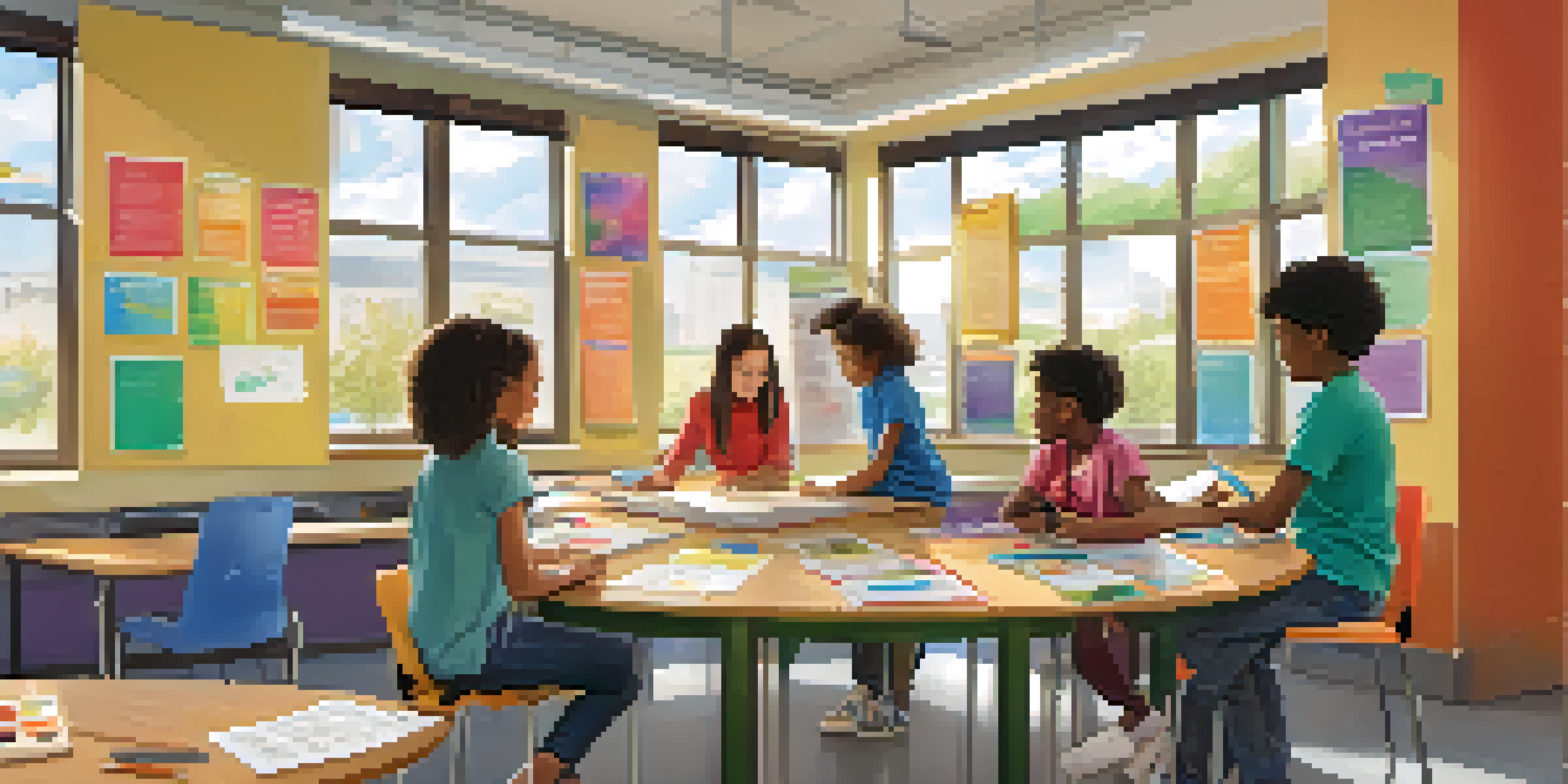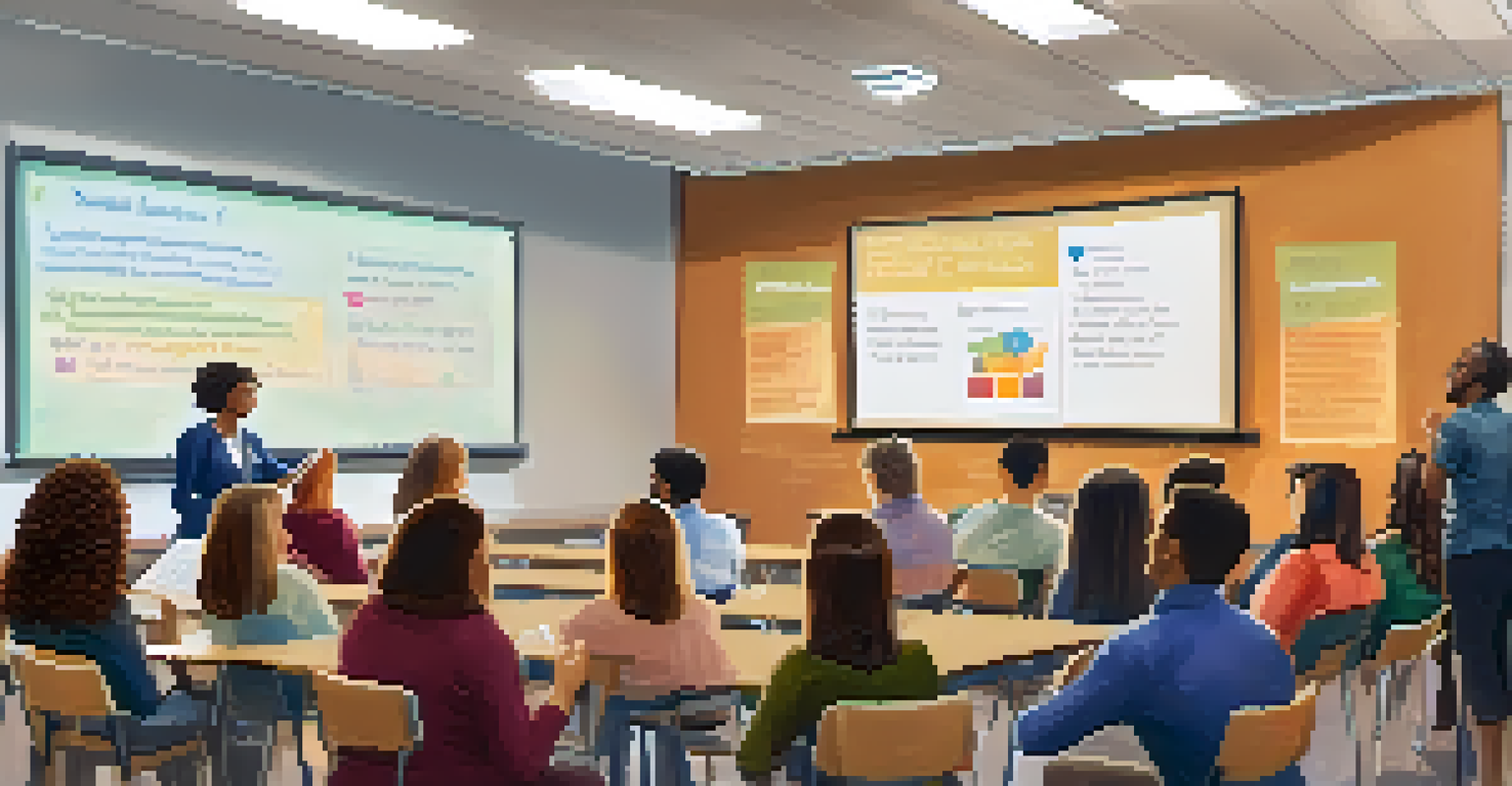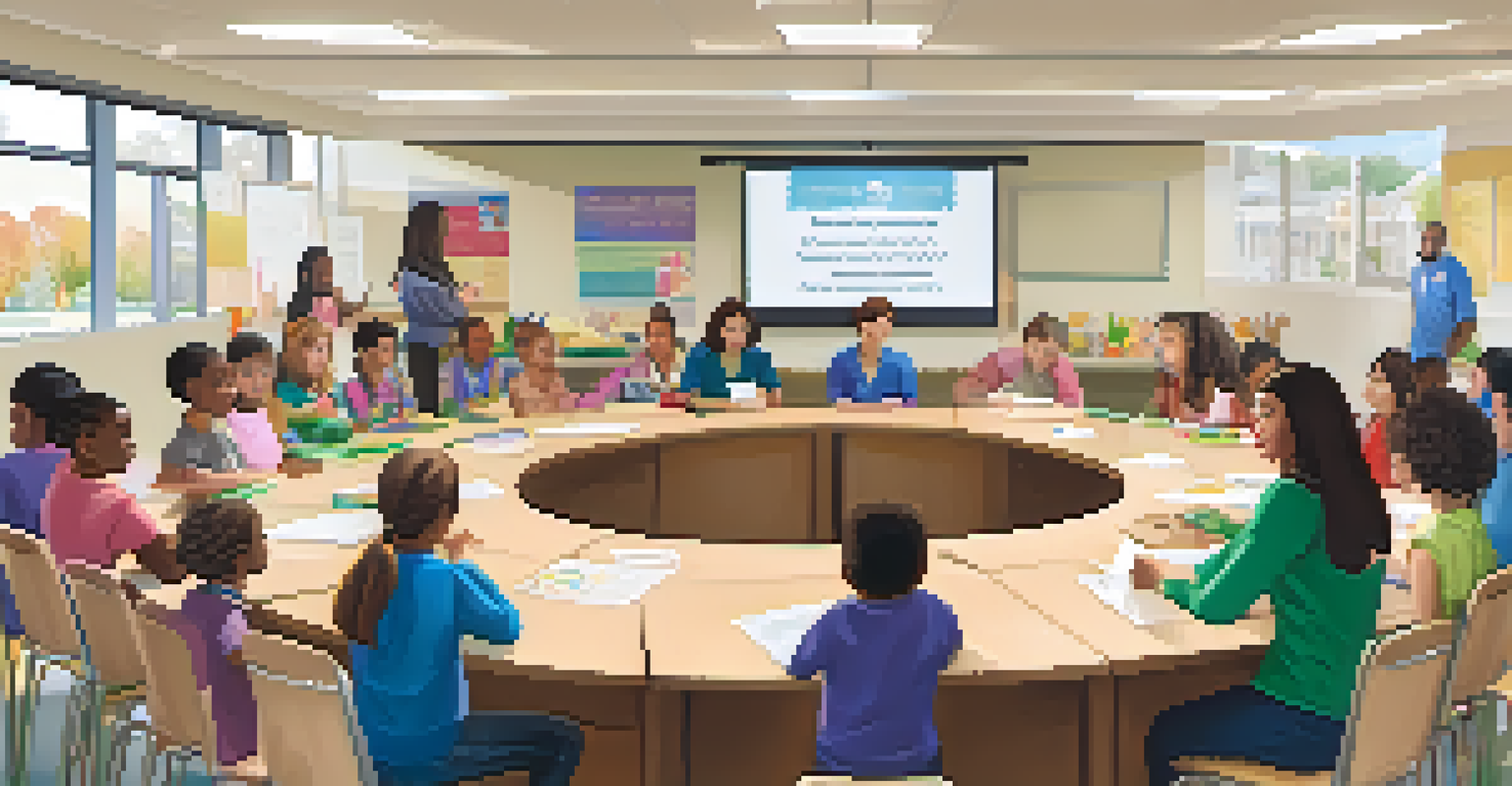Creating a Roadmap for Implementing Personalized Learning

Understanding the Concept of Personalized Learning
Personalized learning is about tailoring education to meet individual student needs. It focuses on giving learners control over their educational experiences, allowing them to progress at their own pace. This approach can result in more engaged students who take ownership of their learning journey.
Personalized learning is not a one-size-fits-all approach; it’s about understanding each student's unique needs and creating pathways to success.
Imagine a classroom where each student has a unique learning path, much like choosing your own adventure in a book. This isn’t just a dream; it’s the essence of personalized learning. By incorporating various teaching methods, such as project-based learning and technology, educators can cater to different learning styles effectively.
However, implementing personalized learning requires a shift in mindset. Teachers and administrators must embrace flexibility, creativity, and a willingness to adapt their strategies to better serve each student's needs.
Setting Clear Goals for Personalized Learning
Before diving into implementation, it's essential to establish clear objectives. What do you want to achieve with personalized learning? Goals could range from improving student engagement to enhancing academic performance.

By having specific, measurable goals, you create a roadmap that guides your personalized learning initiatives. For instance, if your goal is to improve comprehension skills, you might focus on tailored reading programs that cater to various levels of understanding.
Tailoring Education to Individuals
Personalized learning tailors education to meet the unique needs of each student, promoting engagement and ownership of their learning journey.
These goals should also be communicated with all stakeholders, including educators, students, and parents. When everyone is on the same page, it fosters a collaborative environment where personalized learning can thrive.
Assessing Student Needs and Learning Styles
Understanding your students is crucial for effective personalized learning. Conduct assessments to identify individual strengths, weaknesses, and learning preferences. This data can come from standardized tests, surveys, or informal observations.
Education is not the filling of a pail, but the lighting of a fire.
Think of it as a puzzle; each piece represents a different student's needs. Once you have these pieces, you can start to see the bigger picture of how to tailor your approach. For example, some students may benefit from visual aids, while others might thrive with hands-on activities.
Regular check-ins and feedback loops can help you monitor progress and adjust your strategies as needed. This ongoing assessment ensures that personalized learning remains relevant and effective for each student.
Choosing the Right Tools and Resources
The right tools can make or break your personalized learning initiative. Consider using technology that allows for customization, such as learning management systems or adaptive learning software. These resources can provide tailored content and track student progress over time.
However, technology should complement, not replace, traditional teaching methods. For instance, while online quizzes can provide instant feedback, group discussions can foster social learning and collaboration among students.
Setting Clear Goals is Essential
Establishing specific, measurable goals for personalized learning initiatives creates a roadmap for success and collaboration among all stakeholders.
Ultimately, selecting the right mix of tools involves understanding your students’ needs and the resources available to you. Keep an open mind, and be prepared to experiment with different options to see what resonates best.
Training Educators for Personalized Learning
Educators are the backbone of personalized learning, and their training is paramount. Offering professional development opportunities can help teachers become more comfortable with new strategies and technologies. This could be in the form of workshops, peer coaching, or online courses.
Think of teacher training as equipping a toolbox; the more tools they have, the better they can support their students. A well-trained educator can adapt lessons on the fly and provide the individualized support that students need to succeed.
Moreover, fostering a culture of collaboration among educators can lead to sharing best practices and innovative ideas. When teachers learn from one another, it creates a supportive environment that enhances the personalized learning experience.
Involving Parents and the Community
Personalized learning should extend beyond the classroom, and involving parents is crucial for success. Regular communication with families about their children's progress fosters a partnership that enhances learning outcomes. Consider hosting workshops or information sessions to keep parents informed and engaged.
Community involvement can also enrich personalized learning initiatives. Local organizations and businesses can provide resources, mentorship programs, or real-world learning opportunities that align with students’ interests.
Involving Community Enhances Learning
Engaging parents and local communities in personalized learning fosters a supportive environment that enriches students' educational experiences.
By building a strong network of support, you create a holistic approach to personalized learning. This collaboration ensures that students receive encouragement and resources from multiple sources, making their learning journey even more impactful.
Evaluating and Adjusting the Personalized Learning Plan
Once your personalized learning plan is in action, it’s essential to evaluate its effectiveness regularly. Collect data on student performance and engagement to determine what’s working and what could be improved. This could involve analyzing test scores, gathering student feedback, or observing classroom dynamics.
Think of this evaluation as a GPS; it helps you navigate your path and make adjustments along the way. If something isn’t quite right, don’t hesitate to pivot your strategies to better meet your students' needs.

Encouraging a culture of continuous improvement allows for ongoing refinements to the personalized learning approach. By remaining flexible and open to change, you can ensure that your educational strategies evolve alongside your students’ needs.